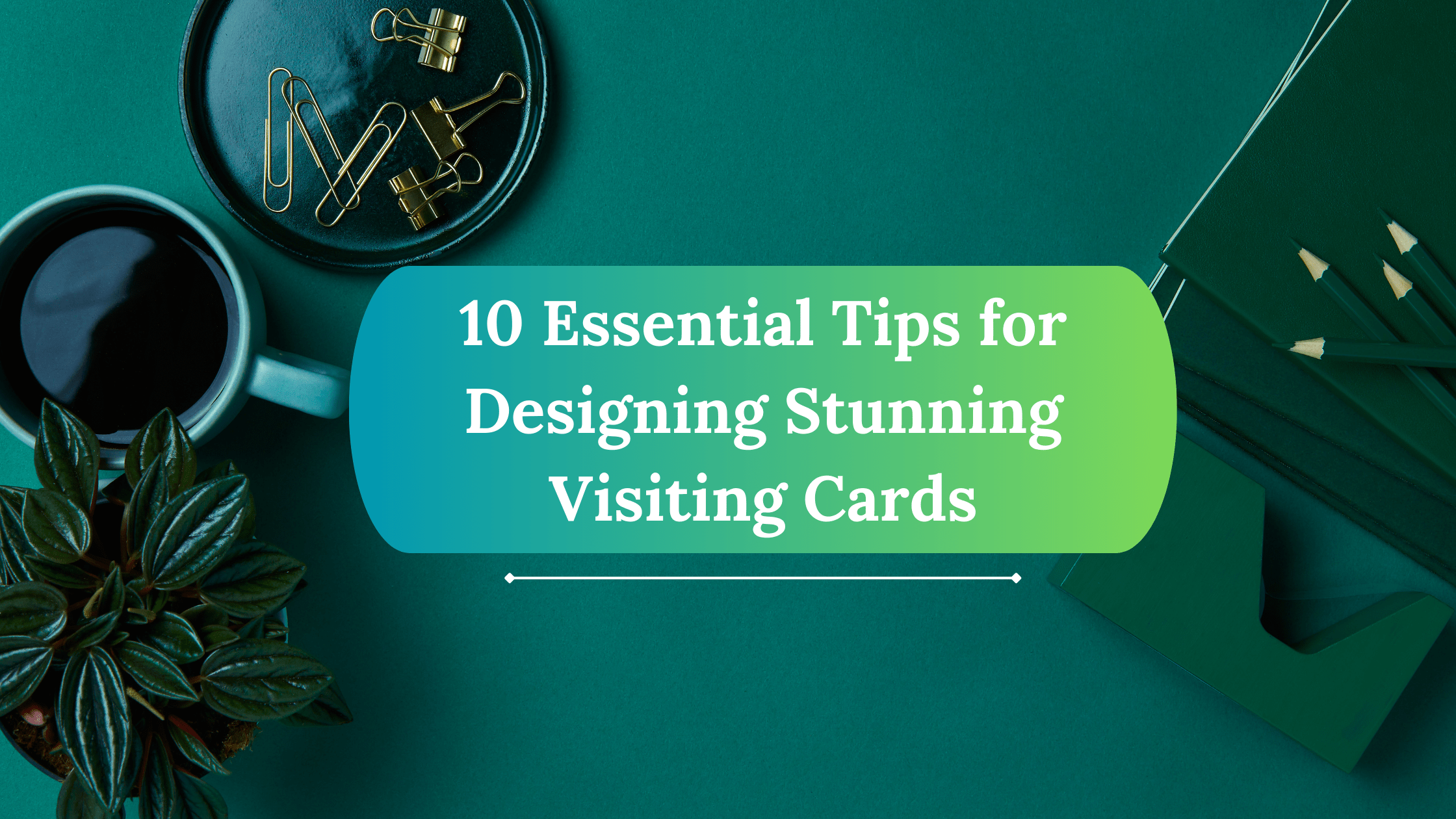In today’s fast-paced, digital world, the importance of a well-designed visiting card cannot be overstated. A business card is often the first impression you make on potential clients or networking contacts, and it can set the tone for your professional relationship. To help you create a captivating and effective visiting card, we’ve compiled a list of ten essential tips. Whether you’re a graphic designer or a business owner, these insights will guide you in crafting a memorable card that stands out from the crowd.
-
Keep It Simple
Simplicity is key when it comes to visiting card design. A cluttered card can confuse the viewer and make it difficult to remember you. Stick to one or two key elements, such as your name and professional title, along with essential contact information.
-
Choose the Right Dimensions
While the standard visiting card size is 3.5 x 2 inches, don’t be afraid to experiment with different dimensions. Just ensure that the size is practical and fits easily into wallets or cardholders. Unique sizes can make your card more memorable, but maintain usability.
-
Select a Cohesive Color Scheme
Colors evoke emotions and can influence how your card is perceived. Choose a color palette that reflects your brand identity. Limit your palette to two or three complementary colors to maintain harmony and avoid overwhelming the viewer.
-
Use High-Quality Materials
The texture and quality of your visiting card can speak volumes about your brand. Opt for high-quality cardstock that feels substantial. Consider special finishes like matte, glossy, or textured to add a unique touch that enhances the overall feel.
-
Incorporate Your Logo
Your logo is a crucial part of your brand identity. Ensure it’s prominently displayed on your visiting card. A well-designed logo can create instant recognition and help establish trust with potential clients.
-
Choose Readable Fonts
Typography plays a significant role in the legibility of your visiting card. Opt for clean, professional fonts that are easy to read. Avoid overly decorative fonts, as they can distract from essential information. A good rule of thumb is to use no more than two different typefaces.
-
Prioritize Contact Information
Your visiting card should clearly display your contact information. Include your name, job title, phone number, email address, and website. If applicable, consider adding your social media handles, but limit them to platforms relevant to your business.
-
Utilize Both Sides
Don’t be afraid to use the back of your visiting card! This space can be utilized for additional information, such as a tagline, a brief description of your services, or even a QR code that links to your website or portfolio. Just ensure that the design remains cohesive.
-
Add a Personal Touch
Consider adding a personal touch to your card to make it more memorable. This could be a unique design element, a tagline that reflects your personality, or even a handwritten note if you give the card out in person.
-
Request Feedback Before Printing
Before finalizing your design, seek feedback from trusted colleagues or friends. Fresh eyes can catch errors or offer suggestions that you might have overlooked. Make necessary adjustments based on their feedback to ensure your card is polished and professional.
In conclusion, visiting card printing is an art that combines design, material choice, and quality to create a tangible representation of your brand. Kapricorn Prints well-crafted visiting card printing bangalore can be a game-changer in your networking efforts, opening doors to new opportunities and connections. By following the tips outlined above, you can create an impactful visiting card that resonates with your target audience. Don’t underestimate the power of a simple card – it could be the key to your next big break.



